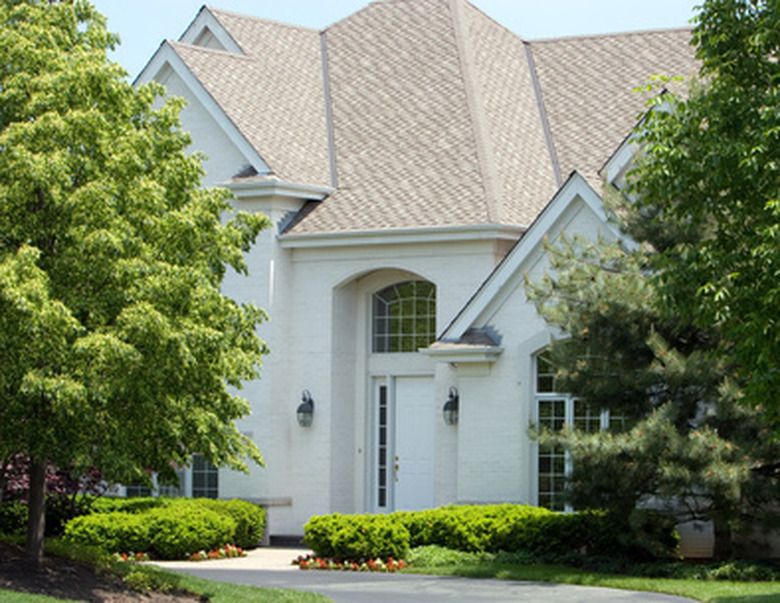Materials That Absorb And Reflect Solar Energy
Solar energy comes from the Sun's power. How much of it is available depends on whether days are sunny or cloudy. Solar power can be used to heat homes, particularly in cooler climates. In warmer climates it can be desirable to reflect solar energy away from homes to keep them cool. A variety of materials absorb or reflect solar energy.
Dark- and Light-Colored Items
Dark- and Light-Colored Items
Solar energy can be used in cooler climates to heat houses naturally. Dark-colored items absorb solar energy and get hot quickly. Dark-colored furniture can be positioned in a location in a home that receives substantial sunlight during the day. Dark curtains can also be used to absorb heat from the Sun. These items will then release the energy slowly at nighttime. Light-colored materials can be used in warmer climates to keep houses cool. White roofs, for instance, reflect most of the light energy that strikes them. Light-colored curtains can also be used to reflect rays of sunlight when the Sun is at its hottest.
Building Materials
Building Materials
In cooler climates it is necessary to warm buildings using solar energy. Many of the materials that go into building these homes are able to absorb a high amount of solar energy. Concrete and brick absorb the Sun's heat well. Throughout the day, these materials absorb solar energy and store it, and it will slowly be released as the air becomes cooler at night. This process maintains a more comfortable temperature in a home and keeps energy bills lower. In warmer climates building materials need to reflect solar energy. For instance, there are a number of reflective roofing options available. Roofs can be made of white vinyl, an inherently reflective material. Several coatings are available to cover roofs that are not currently reflective, including ceramic coatings and heat-reflective paints available in either matte or glossy finishes.
Water
Water
Water is an incredibly conductive material that absorbs solar energy easily. Individuals can make use of water to provide heat inside a home during cooler seasons. Simply fill a large jug with tap water and place it somewhere in a home that receives sunlight throughout the day. Open the jug at bedtime, and the heat will be released slowly during the night.
Cite This Article
MLA
Peralta, Mary Margaret. "Materials That Absorb And Reflect Solar Energy" sciencing.com, https://www.sciencing.com/materials-absorb-reflect-solar-energy-7483671/. 24 April 2017.
APA
Peralta, Mary Margaret. (2017, April 24). Materials That Absorb And Reflect Solar Energy. sciencing.com. Retrieved from https://www.sciencing.com/materials-absorb-reflect-solar-energy-7483671/
Chicago
Peralta, Mary Margaret. Materials That Absorb And Reflect Solar Energy last modified March 24, 2022. https://www.sciencing.com/materials-absorb-reflect-solar-energy-7483671/
